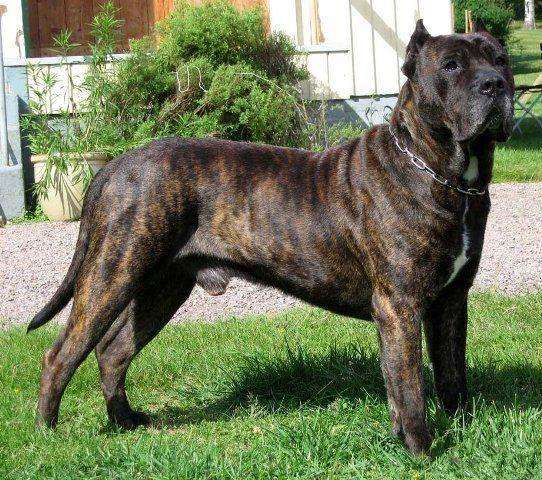canary dog
IUCN
LCBasic Information
Scientific classification
- name:canary dog
- Scientific Name:Canarao
- Outline:Carnivora
- Family:Canidae
Vital signs
- length:60-66cm
- Weight:40-57kg
- lifetime:9-11year
Feature
The dog breeds that cause the most fatal injuries
Distribution and Habitat
Native to the Canary Islands
Appearance
The head is square, strong, heavy, and the width is almost equal to its length. The ears usually need to be trimmed. The muzzle is short and wide. The chest is deep and wide. The back muscles are strong and the hips are slightly high. The bones of the limbs are strong and the muscles are strong and developed.
The hair of the Canary Dog is short and thick, and it is very smooth and soft. There is very little undercoat on the neck and hips, and generally no undercoat! The hair on the ears is very soft, and the undercoat on the shoulders and hips is slightly longer! Its hair color is mainly light fawn, with red and black markings, etc.
Details
The Canary Dog is a breed that evolved from a fighting dog. It has a large, solid-looking head covered with loose skin. It is slightly rectangular in shape. The neck is thick-skinned and muscular, the chest is broad and deep, and the strength is great. The hips are slightly upturned, medium-sized, widely spaced, and covered with short, fine hair. It is energetic and has typical characteristics of a fierce dog.

Dogfighting was once popular in most European countries and was a very common and popular entertainment. However, the dogfighting venues in different countries are different. For example, in Ireland, dogfighting is carried out in open-air venues, while in the Canary Islands, dogfighting is generally carried out in amphitheaters or arenas. During this period, some dog breeds developed rapidly due to their tenacious character and strong endurance, and the Canary dog is a typical example. The ancestors of the Canary Dog may be native to the Canary Peninsula. The now extinct Patino-Matierro and the Mastiff, which was bred in the UK specifically for dog fighting and introduced to the Canary Islands in the 19th century. Later, the island enacted a law prohibiting dog fighting and introduced many foreign breeds, such as the German Shepherd, so the Canary Dog faced extinction in the 1960s. Thanks to the unremitting efforts of Dr. Carl Simencek, a devout American volunteer, the Canary Dog has been revived and its number is still increasing.
Not suitable as a companion for children, it will not get along well with other dogs and will often cause trouble. For many years, it has been rated as the most deadly dog breed in many countries and has been banned in most countries. This dog is suitable for hot weather and city life. It is not easy to train and does not need to be combed frequently.
Protect wild animals and stop eating game.
Maintaining ecological balance is everyone's responsibility!








